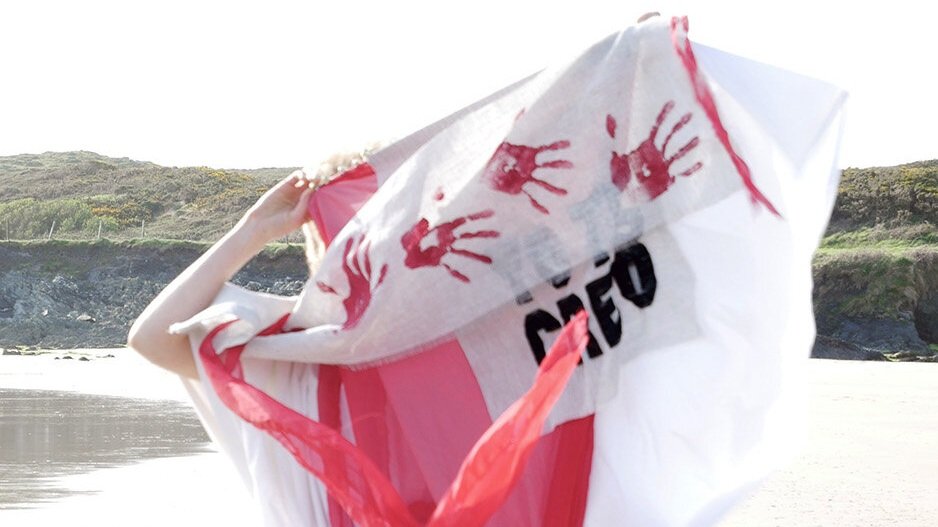Brazilian artist, Hélio Oiticica, first created his Parangolés in the late 1960’s. Consisting of layers of fabric, plastic and matting, they were intended to be worn like costumes but experienced as mobile sculptures or habitable paintings. His parangolés were worn by samba dancers of the Mangueira favela, a shanty town neighborhood in Rio, and contained hidden political messages, a protest to the military dictatorship which had taken control of Brazil at the time.
This parangolé was created in response to nationwide protests in Spain after five men accused of the gang rape of a teenager during the running of the bulls festival in Pamplona were found guilty of the lesser offence of sexual abuse. Red and white are the traditional colours of the festival and I incorporated hand prints and the slogan, ‘Yo te creo”, both of which were prevalent on images used in the demonstrations.






